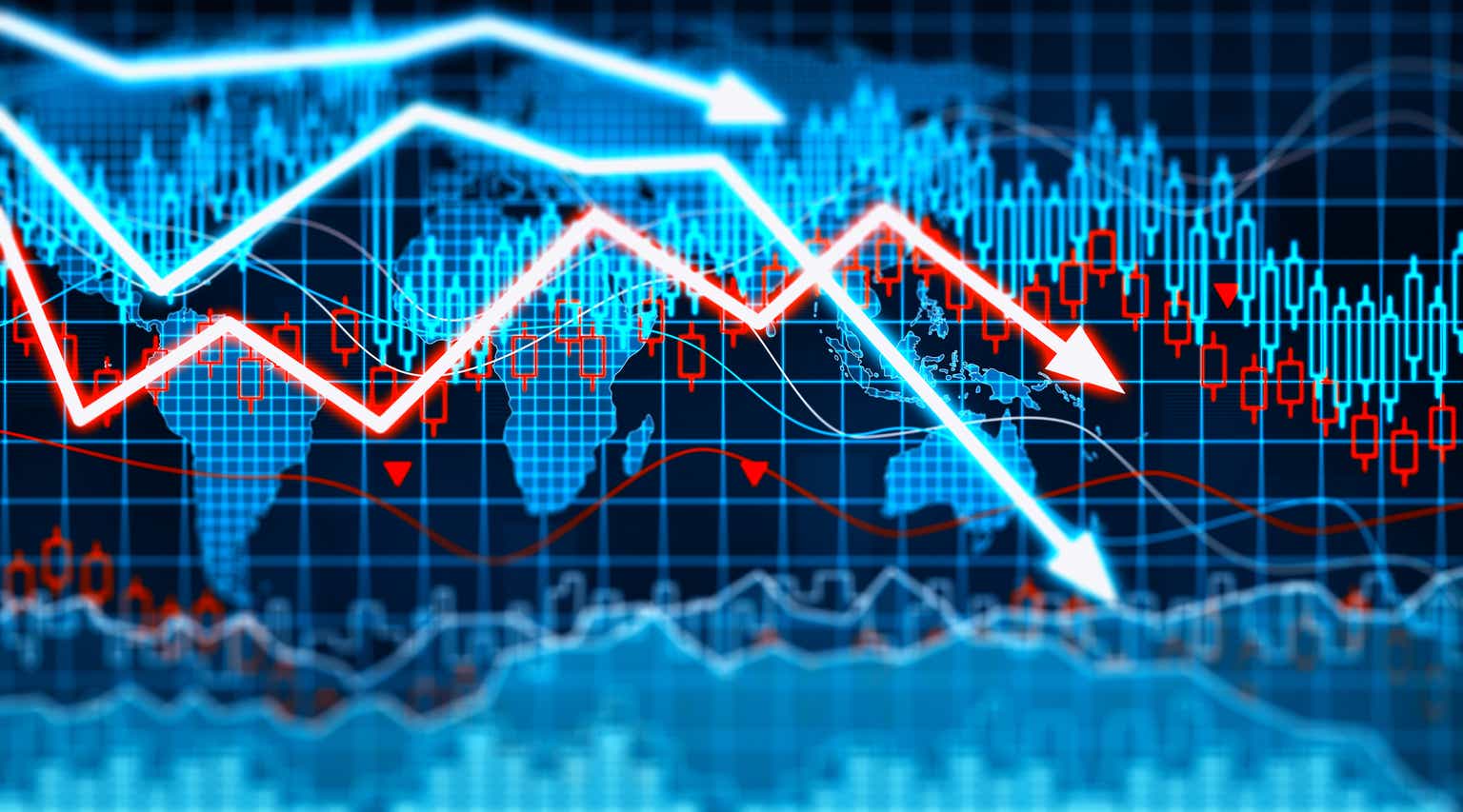In August, China’s exports declined 8.8% vs. the same month a year ago. This was bad, but better than July’s 14.5% decline. Clearly, China’s overall exports are still falling dramatically.
China’s imports also declined 7.3% in August, which was bad but better than the 12.4% decline in July. The Chinese yuan has also fallen 6% against the U.S. dollar this year and is now at its lowest level since 2007.
China’s economic slowdown is now impacting its region, including South Korea, which is in the midst of its longest manufacturing slowdown in nearly 50 years. Japan and Taiwan are also experiencing a manufacturing slowdown.
Malaysia, Thailand and Vietnam are all experiencing slower economic growth due to China. In the region, only Australia is not being adversely impacted by China, due largely to the fact that this year China lifted its tariffs on coal, barley, lobsters and other goods imported from Australia.
On the bright side, Chinese vehicle exports soared 104.4% this year as its electric vehicles (EVs) invaded Europe and other key markets. Obviously, a weak Chinese yuan helps boost China’s EV competitiveness. So far this year, China’s crude oil imports have risen 14.7%, while its soybean imports surged 17.9%.
Interestingly, China is building battery plants far beyond its domestic needs, so clearly the Chinese are striving to dominate the worldwide demand for iron-phosphate (LPG) and lithium-ion batteries.
Specifically, China will soon manufacture enough batteries for 22 million electric vehicles (EVs), which is more than double China’s domestic demand. Chinese manufacturers BYD (OTCPK:BYDDF) and CATL dominate global battery manufacturing, while South Korea’s LG Energy Solution is #3, based on new plants coming online. Overall, China may soon make more batteries than the world needs, so discounting may follow.
Russian drones continue to attack Ukrainian grain facilities at important ports. As a result, starvation is a risk in Sudan and other countries that have traditionally relied on Ukrainian grain.
Ever since Russia cancelled the Black Sea Grain Initiative, concerns over global food supplies have grown, especially since droughts in Brazil, Canada, Europe and the U.S. this year have curtailed global crop harvests. As a result, the global food shortage is now increasing international calls for a cease fire between Russia and Ukraine.
Complicating matters further, U.S. National Security Advisor Jake Sullivan recently met with high-ranking Ukrainian officials to discuss efforts to squelch ongoing corruption.
Shortly after that meeting, Ukrainian President Volodymyr Zelensky removed the Minister of Defense after exposing the corruption associated with the billions in aid that Ukraine has received, resulting in waning support from NATO.
In the meantime, inflation is raging in Russia since the ruble has dropped from 0.17 to 0.10 in the past year. The U.S. and European Union (EU) last week warned the UAE to stop helping Russia circumvent Western sanctions. I suspect that these U.S. and EU demands will be politely ignored by the UAE.
With China’s trade dominance waning, global free trade is breaking down. Chinese President Xi Jinping will not be at the G20 meeting in India. This is the first time that President Xi will miss a G20 meeting.
China will be represented by Premier Li Qiang. China is becoming an increasingly unpredictable trading partner, so its G20 snub will not help its reputation. Additionally, Russian President Vladimir Putin will also miss the G20 meeting and is expected to be replaced by Russian Foreign Minister Sergei Lavrov.
The G20 issued a communique warning of “cascading crises” threatening long-term economic growth, highlighting uneven economic growth, banking turmoil and the need to help the poor.
However, the G20 failed to criticize Russia, even for its invasion of Ukraine, reportedly due to China’s influence. Also, India is an important trading partner for Russia and India has been ignoring NATO’s sanctions.
Another example of slowing global trade is that Germany’s factory orders plunged 11.7% in July, which was far worse than the economists’ consensus expectation of a 4.3% decline.
This is the biggest drop in factory orders in over three years (since April 2020) and is indicative that China’s economic woes are spreading to other countries. As a result, I am expecting a downward revision to worldwide GDP growth.
Interestingly, Germany’s green push is sputtering. Specifically, Germany needs to triple its wind capacity by 2030 to meet its lofty carbon emission goals. However, Germany’s August wind auction only offered to develop 1.4 gigawatts of electricity, down from 1.6 gigawatts at its July auction.
The bidding on offshore wind projects remains weak, since the economics of wind energy is erratic, especially if there is a cold snap in winter that can damage wind turbines. Germany has a growing popular pushback on carbon emission goals, since they tend to drive up electricity prices and threaten Germany’s factory output.
Eurostat reported that the European Union (EU) GDO grew at a snail’s pace (+0.1%) in the second quarter. Austria, Italy and the Netherlands were characterized by negative GDP growth, while Germany’s GDP was unchanged. A manufacturing recession in Italy and Germany likely got worse in the third quarter and is expected to cause the European Central Bank (ECB) to finally pause key interest rate hikes.
Meanwhile, U.S. trade volume is growing. Last Wednesday, the Commerce Department announced that U.S. trade increased in both categories: Exports rose 1.6% to $251.7 billion in July, while imports rose 1.7% to $316.7 billion.
In the process, the U.S. trade deficit rose to $65 billion in July, up from a revised $63.7 billion in June. However, the trade deficit has declined 21.4% this year due largely to higher energy prices boosting the value of U.S. exports.
Trade has a big impact on GDP, so a significant proportion of the Atlanta Fed’s 5.6% estimate for third quarter GDP growth is attributable to rising energy exports.
Why Are Energy Prices Still Rising After Labor Day?
Worldwide crude oil demand typically peaks around Labor Day, but not this year, so I will be closely monitoring U.S. inventory levels, but also Saudi and Russian attempts to keep prices high – perhaps for political reasons.
Saudi Arabia announced last Tuesday that it is extending its production cuts through the rest of 2023. Russia also confirmed on Tuesday that it would continue with its 300,000 barrel per day production cut through the end of 2023.
There are also rumblings that Saudi Arabia may try to influence the 2024 Presidential election by keeping crude oil prices high, perhaps to embarrass the Biden family after candidate Biden insulted not only Mohammed bin Salman, but the entire Saudi royal family.
The media is also implying that Russia may also want to hurt the Biden Administration in order to try to re-elect Donald Trump!
Normally, I do not participate in election conspiracy theories, but there is no doubt that Saudi Arabia welcomed President Trump with an elaborate ceremony, and Russia probably likes the fact that candidate Trump wants to end the war in Ukraine. If crude oil prices remain high throughout 2024, it’s clear that Saudi Arabia and Russia’s production cuts could be the primary reason.
The Wall Street Journal reported on Wednesday that diesel prices have risen over 40% since May, since the medium sour crude oil from Russia makes a higher proportion of diesel than intermediate and sweet crude oil.
As a result, a diesel shortage has emerged in Europe. The Middle East has a crude oil grade more similar to Russian crude, but Saudi Arabia’s production cut means that less medium sour crude oil is available to make diesel.
Since approximately 42% of European vehicles run on diesel, higher prices at the pump there may also impact the consumer spending decline taking place in Europe.
The Wall Street Journal also reported on Friday that the Biden Administration’s Interior Department cancelation of seven oil and gas leases in Alaska’s Arctic Nation Wildlife Refuge were “based on the best available science and in recognition of Indigenous Knowledge.” An Interior Department memo had encouraged agencies to consult Alaskan “spiritual leaders” and condemned “methodological dogma.”
Turning to the economic statistics, we got a big boost when the Institute of Supply Management (ISM) on Wednesday reported that its non-manufacturing (service) index rose to 54.5 in August, up from 52.7 in July.
This was a big surprise, since economists were only expecting the ISM service index to come in at 52.5. Furthermore, the strong ISM reading is indicative of strong third quarter GDP growth.
The new orders component rose for the eighth straight month to 57.5 in August, up from 55 in July. The business activity, inventory sentiment and prices index components all rose to an impressive at 57.3, 61.5 and 58.9, respectively, while fully 13 of the 18 service industries that ISM surveyed reported growth.
Also, the Fed released its Beige Book survey on Wednesday in preparation for the Fed’s late-September Federal Open Market Committee (FOMC) meeting. The good news is that the Beige Book survey acknowledged that inflation pressures are abating, and that job growth is slowing.
Almost all of the Fed’s 12 districts indicated businesses “renewed their previously unfulfilled expectations that wage growth will slow broadly in the near term.”
The only inflation warning was a Beige Book comment that “several districts highlighted sharp increases in property insurance costs during the past few months.”
Apparently, insurance companies fleeing California, Florida and other high-risk areas may be hindering some regional housing so I do not expect a Fed interest rate hike at its late-September FOMC meeting.
All content above represents the opinion of Louis Navellier of Navellier & Associates, Inc.
Disclaimer: Please click here for important disclosures located in the “About” section of the Navellier & Associates profile that accompany this article.
Disclosure: *Navellier may hold securities in one or more investment strategies offered to its clients.
Original Post
Editor’s Note: The summary bullets for this article were chosen by Seeking Alpha editors.
Read the full article here









Leave a Reply